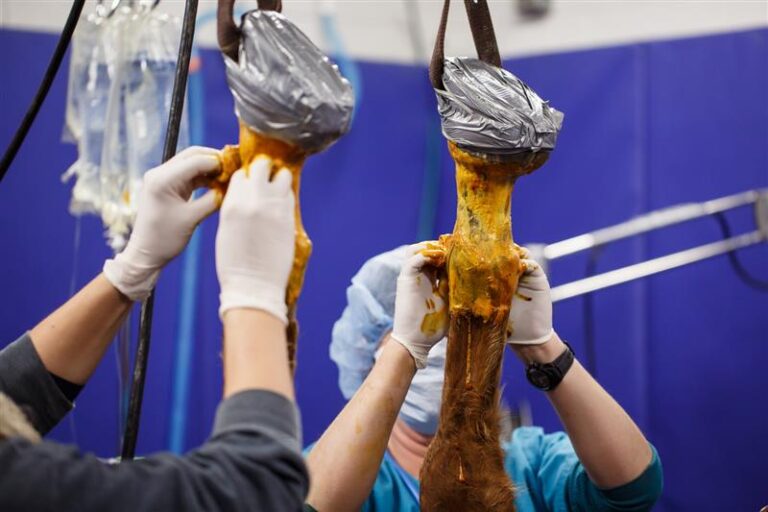
Equine recurrent uveitis (ERU) is the most common cause of blindness in horses, with up to 47% of ERU cases going blind. Not only do 73% of affected horses lose monetary value, but 29% also don’t return to their previous role and 31% perform at a lower level. ERU has a variety of potential treatment options but, to date, none of them work completely for this often immune-mediated disease. In addition, many treatment options have unwanted side effects:
- Topical NSAIDs are epitheliotoxic, and topical steroids elicit corneal degeneration.
- Systemic NSAIDs can contribute to right dorsal colitis or renal disease.
- Systemic steroids may induce laminitis in at-risk horses.
- Intravitreal gentamycin injection can cause retinal degeneration and cataract progression.
- Suprachoroidal cyclosporine implants may have a limited duration of three to four years.
- Vitrectomy success is still being analyzed.
SOCS1-KIR as Uveitis Treatment in Horses
At the 2023 AAEP Convention, Nicole Scherrer, DVM, Dipl. ACVO, of the University of Pennsylvania’s New Bolton Center, described a study of a novel drug that does not utilize the COX pathway. Instead, SOCS1-KIR focuses on negative regulation of the tyrosine kinase pathway. This suppressor of cytokinase signaling 1 binds to the kinase inhibitory region to stop the inflammatory pathway.
Cases of ERU presented to the University of Pennsylvania veterinary school from 2019-2022 were randomly assigned treatment with 0.1% diclofenac or SOCS1-KIR. Appaloosa horses (n=4) were overrepresented as 23.5% of the 16 horses in the study compared to the hospital Appaloosa population of 0.9% over the same study period. Three horses (four eyes) had glaucoma and were treated with dorzolamide/timolol, and two were treated with flunixin meglumine for three days due to severe inflammation.
Horses received three ophthalmic exams at two-week intervals. The horses received physical exams, and their CBC and blood chemistries were also evaluated. Scherrer’s team assessed the affected eyes and assigned inflammatory scores of 0/1-4 for each variable: ocular discharge, hyperemia, chemosis, corneal edema, hyphema, and aqueous flare. They added these scores for a total inflammatory score, with the lowest possible score of 5 and the highest score of 24.
Study Results
Of the 16 horses in the study, 11 were unilaterally affected and five were bilaterally affected. For those with bilateral ERU, one eye was treated with SOCS1-KIR and the other with diclofenac. The results showed no statistical difference in total inflammatory scores between diclofenac and SOCS1-KIR. The researchers noted:
- Aqueous flare and ocular discharge showed reduced inflammation with SOCS1-KIR compared to diclofenac.
- Overall inflammatory score with SOCS1-KIR was reduced at the second and third appointments compared to the initial visit.
- Ocular hyperemia with SOCS1-KIR was reduced by the third appointment compared to the initial visit.
- Inflammation did not resolve in 11 horses, but it did improve.
The researchers concluded that SOCS1-KIR has similar efficacy as an anti-inflammatory drug when compared to diclofenac (with its COX anti-inflammatory pathway) with regard to managing ocular hyperemia and aqueous flare associated with ERU.
Sponsored by









